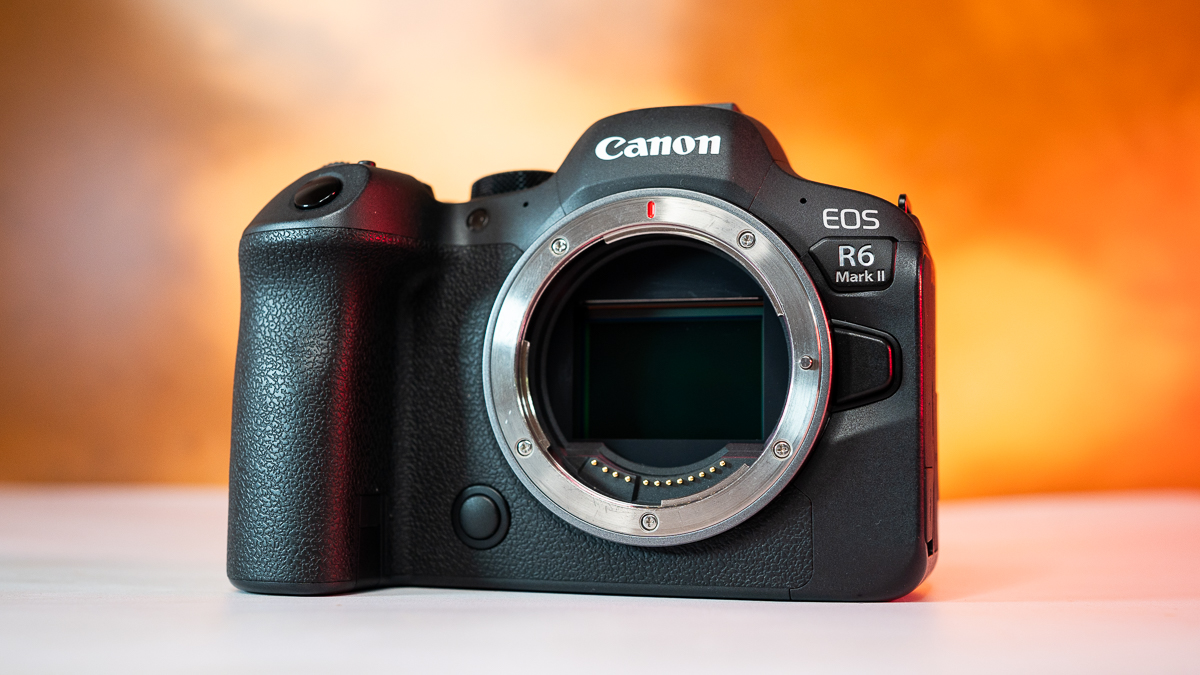
Skip to main content
Close main menu
Live Science
Sign up to our newsletter
View Profile
Search Live Science
Planet Earth
Archaeology
Physics & Math
Human Behavior
Science news
Life’s Little Mysteries
Science quizzes
Newsletters
Story archive
‘Halo’ barrels off Los Angeles
Visible time crystal created
Stephen Hawking’s black hole theory finally confirmed
NASA finds ‘clearest sign’ yet of life on Mars
Giant ‘chessboard’ surrounds Idaho river
Don’t miss these
Canon EOS R5 II review
OM System OM-3 review — a camera for wildlife and astrophotographers alike?
Best lenses for wildlife photography 2025 — crisp, detailed wildlife shots
Best trail cameras: Capture wildlife photos and videos the easy way
Canon RF 100mm f/2.8L Macro IS USM lens review
Olympus OM-D E-M10 Mark IV review
Last chance! The Canon EOS R8 is still cheapest at Walmart — just in time for the Perseids and late summer wildlife
Best underwater cameras 2025 — take photos of marine and freshwater wildlife and fauna
Best drones for wildlife and landscapes in 2025 — Explore and capture the world from above
5 common mistakes beginner wildlife photographers make — and how to avoid them
Best lenses for astrophotography 2025 — capture the cosmos in detail
Five simple wildlife photography tips for better shots without fancy gear
Best spotting scopes in 2025 for birdwatching and wildlife observation
Best thermal binoculars: Observe nocturnal wildlife after dark
Garmin Forerunner 970 review — A serious smartwatch for running pros
We tested the Canon EOS R6 II in a nature reserve — here’s our verdict
The Canon EOS R6 II takes on real-world challenges in the wild — but does it deliver for wildlife photography?
Kimberley Lane
11 September 2025
When you purchase through links on our site, we may earn an affiliate commission. Here’s how it works.
(Image: © Kimberley Lane)
Live Science Verdict
An absolute triumph for photographers who want to start out with something affordable that can still produce excellent images and won’t limit you as your skills grow. We loved it.
$1,999 at Walmart
$2,199 at Adorama
$2,199 at Crutchfield
$2,199.99 at Best Buy
Up to 40FPS burst rate
Pre-Capture ensures you don’t miss the shot
Comfortable and easy handling — not too big, not too small
Handles noise well, even with slower lenses
We’d like more custom buttons
24.2MP resolution could be the reason users upgrade later
Best picks for you
Best cameras for wildlife photography 2025: Shoot nature like a pro
Best cameras 2025
Best wildlife lenses under $1,000 — ideal for safari or even birds in the park
Why you can trust Live Science
Our expert reviewers spend hours testing and comparing products and services so you can choose the best ones for you. Find out more about how we test.
Performance
Functionality
Related products
To put the Canon EOS R6 II through its paces, we took it to a nature reserve in South Wales with one clear goal: photographing wildlife. Armed with the Canon RF 200-800mm f/6.3-9 IS USM lens, we wanted to see how well this camera handles the demands of fast, unpredictable subjects in the field.
Specifications
Type: Mirrorless
Sensor: 24.2MP full frame
Lens mount: RF mount
Burst rate: Up to 40FPS (electronic) and 12FPS (mechanical)
Viewfinder: 3.69 million dots
Video capability: Oversampled 6K video to produce high-quality 4K/60p
Weight: Approx. 1.5 lbs. / 670g
Size: 5.45 x 3.87 x 3.48-inch / 138.4 x 98.4 x 88.4 mm
Memory card type: Dual slots / UHS-I and UHS-II SD/SDHC/SDXC cards
Sitting between the entry-level EOS R8 and the flagship EOS R5 II, the R6 II occupies a sweet spot in Canon’s mirrorless lineup. It offers many of the pro-level features found higher up in the range, but at a price that makes it accessible to serious enthusiasts and ambitious beginners. In short, it’s designed for photographers who want more than a starter camera, but don’t yet need (or want to pay for) the mega horsepower of Canon’s top-end models that many would consider the best cameras for wildlife photography.
Canon EOS R6 Mark II at Adorama for $2,199
Canon EOS R6 II review
Canon EOS R6 II: Design
Image 1 of 3
The 3-inch fully articulating screen is useful for all types of shooters.(Image credit: Kimberley Lane)
The R6 II has a photo/video switch, a large mode dial, on/lock/off switch with a dial, video record button, a top dial and an M-fn button on the top of the body.(Image credit: Kimberley Lane)
The LCD screen is bright and responsive.(Image credit: Kimberley Lane)
Fits perfectly in the hand
Enough dials and buttons to change the important settings without being cluttered
A good-sized body to pair with bigger lenses
In terms of the Canon EOS R6 II’s design and button layout, it slots neatly between the diminutive R8 and the flagship R5 II. There are enough buttons and dials to keep users happy without making the body look like the cockpit of a 747. The three dials give you direct control over your shutter speed, aperture and ISO without having to dive into the menus, which is exactly what you want when the light is changing fast, or you switch from slow to fast-moving animals.
The buttons feel reassuringly chunky and easy to press, contributing to the R6 II being incredibly intuitive when out in the field. Our only gripe (and it’s a small one) is that there’s only one dedicated custom button. The M-fn (Multi Function) button on the top plate does pull some weight, and can be set to access various functions like drive mode, AF mode and white balance. Not to seem ungrateful, but coming from Sony cameras and their trio of C1, C2 and C3 buttons, we found ourselves wanting more buttons to customize. But for the price, one is absolutely fine — the R6 II gets the fundamentals right, and that’s what really counts.
Image 1 of 3
The dual card slots are a big advantage over smaller models like the R8.(Image credit: Kimberley Lane)
The side of the body houses the microphone jack, headphone jack, a remote control port, a USB-C port and a micro-HDMI port.(Image credit: Kimberley Lane)
The battery compartment also includes a USB-C port for charging.(Image credit: Kimberley Lane)
The fully articulating screen is bright, sharp and responsive. While the EVF isn’t the biggest or brightest we’ve come across, it holds its own and performs consistently in changing light.
Connectivity is well catered for, with two card slots that support UHS-I and UHS-II SD/SDHC/SDXC memory cards, plus a microphone jack, headphone jack, a remote control port, a USB-C port and a micro-HDMI port for video output. There’s an additional USB-C charging port tucked into the battery compartment on the underside of the camera body. All the ports are easy to access, and crucially, the screen doesn’t block them when it’s flipped out.
In the hand, the R6 II hits that Goldilocks zone — not too big, not too small. It balances nicely, even with a long wildlife lens attached, and feels comfortable over longer shoots. At 23.6 oz (670g), it’s light enough not to weigh you down in the field, but still substantial enough to feel robust. Sure, there are lighter cameras out there, but this one gets the balance just right.
Sign up for the Live Science daily newsletter now
Get the world’s most fascinating discoveries delivered straight to your inbox.
Contact me with news and offers from other Future brandsReceive email from us on behalf of our trusted partners or sponsorsBy submitting your information you agree to the Terms & Conditions and Privacy Policy and are aged 16 or over.
Canon EOS R6 II: Performance
Image 1 of 3
The 24.2MP resolution comes into its own when the subject is well-lit and quite close to the camera. | 400mm | F/7.1 | 1/800 | ISO 3,200.(Image credit: Kimberley Lane)
Noise is starting to creep in in the darker areas of the image. | 539mm | F/8 | 1/1,600 | ISO 5,000.(Image credit: Kimberley Lane)
Its noise handling compensates well with a slower lens, but we’d ideally still clean this image up with denoise software. | 539mm | F/8 | 1/1,600 | ISO 5,000.(Image credit: Kimberley Lane)
Handles noise well, which comes in useful when using slower lenses
24.2MP resolution is fine, but we’d have liked it to sit between the R8’s 24MP and the R5 II’s 45MP
Autofocus performs admirably in favorable conditions, but struggles when the subject is obstructed
The 24.2MP sensor delivers sharp, detailed images that punch well above its price point. For overall image quality, there’s little to fault. That said, considering it’s the next step up from the Canon EOS R8, we’d hoped for a bump in resolution. Matching the 32.5MP resolution of the crop-sensor Canon R7 would have given the R6 II an even sweeter spot between the R8 and the 45MP powerhouse that is the Canon EOS R5 II. As it stands, 24MP is more than enough for most shooters, but resolution is likely the biggest reason some might be tempted to upgrade later.
The autofocus was solid and reliable, but not the headline act here. It did a good job locking onto subjects, even when they weren’t facing the camera, and Canon’s generic animal detection mode handled birds and other mammals well enough that a dedicated bird mode would feel unnecessary. That said, it wasn’t bulletproof. In our tests, the R6 II occasionally got confused: It struggled with backlit birds that were partially obscured by grass, and it missed focus entirely when we tried photographing a pigeon nestled among branches — none of the eight frames we took were usable. On the flip side, it tracked birds in flight reasonably well, keeping them in focus more often than not.
Image 1 of 4
At ISO 12,800, there’s substantial noise in the darker parts of the image, including the Robin itself. | 354mm | F/7.1 | 1/640 | ISO 12,800.(Image credit: Kimberley Lane)
However, after using Lightroom’s AI denoise tool, this shot is now much more appealing, while still maintaining sharpness and a believable amount of grain. | 354mm | F/7.1 | 1/640 | ISO 12,800.(Image credit: Kimberley Lane)
Similarly, this photo with an ISO of 25,600 would have previously been unusable due to the amount of noise. | 277mm | F/7.1 | 1/10 | ISO 25,600.(Image credit: Kimberley Lane)
But after cleaning it up,excessive noise straight out of camera at high ISOs is no longer the dealbreaker it used to be. | 277mm | F/7.1 | 1/10 | ISO 25,600.(Image credit: Kimberley Lane)
On the whole, the R6 II handles noise quite well. Because we were shooting with a slower-aperture lens, we often had to push the ISO higher than we otherwise would, which made it a good stress test for the sensor. Even then, noise was only really noticeable in the darker areas of the frame, and rarely to the point of spoiling a shot.
Plus, with modern noise reduction software being as good as it is, high ISO performance is less of a dealbreaker than it used to be — and the R6 II’s files clean up nicely. We didn’t get a chance to put it through a dedicated astrophotography test, as the super-telephoto lens wasn’t ideal for that, but given how it handles noise overall, we’re confident it would be a capable contender for night sky shooters.
Canon EOS R6 II: Functionality
We set up this lighthouse shot ready for the blood moon lunar eclipse, but there were too many clouds. | 250mm | F/6.7 | 1/160 | ISO 200. (Image credit: Kimberley Lane)
40FPS burst rate is excellent for wildlife photography
Pre-Capture starts recording data 0.5 seconds before fully pressing the shutter
Its features and specs seem to be tailor-made for wildlife
In a nutshell, the R6 II is what the R8 would be if it went through a glow-up after a bad breakup. On the inside, they share the same 24.2-megapixel full-frame CMOS sensor and Digic X processor alongside the same blistering 40FPS burst rate. But with the addition of image stabilization, more focus points (4,097 vs 1,053 in the R8), a higher battery life (580 vs 290 shots on the R8) and a 56% higher EVF resolution, the Canon EOS R6 II is the clear choice for beginner wildlife photographers.
Image 1 of 2
The fast burst rate came into its own when we spotted a heron coming in to land next to the hide we were sitting in. | 600mm | F/8 | 1/1,000 | ISO 1,000.(Image credit: Kimberley Lane)
You can easily retrieve details in monochromatic scenes, even at focal lengths of 800mm. | 800mm | F/9 | 1/1,400 | ISO 1,000.(Image credit: Kimberley Lane)
Speaking of which, the 40FPS burst rate is a real asset for wildlife, sport or any kind of fast-action photography. On top of that, the RAW burst mode shoots a continuous stream of images (locked at 30FPS), saving everything into a single CR3 file from which you can later extract individual frames. It keeps the card tidy, but you’ll need to do the extracting either in-camera or with Canon’s software. The R6 II doesn’t have blackout-free shooting, but we found the blackout to be minimal and honestly, it was barely noticeable — it certainly didn’t get in the way while we were shooting.
Related articles
Best cameras for wildlife photography
Best lenses for wildlife photography
Best wildlife lenses under $1,000
Best cameras
Best beginner cameras
Best astrophotography cameras
Best macro lenses
Pre-Capture takes things a step further by recording half a second of action before you even fully press the shutter — a lifesaver when you’re trying to catch unpredictable moments like a bird taking flight or coming in to land. Together, these modes give you a serious safety net, making it far less likely you’ll miss the important shot.
Should you buy the Canon EOS R6 II?
The Canon EOS R6 II handles long lenses well without looking too swamped by them. (Image credit: Kimberley Lane)
✅ You’re a beginner who wants to focus on wildlife photography: Its 40FPS burst rate, intuitive controls and modest price make the R6 II perfect for beginner wildlife photographers who want to grow their skills.
✅ You don’t want to upgrade in a year: It’s better than a true “beginner” camera and you’re less likely to outgrow it.
Don’t buy it if:
❌ You plan on staying on auto modes: The R8 will better suit users who don’t want to shoot in manual
❌ You want more resolution: The R7 or powerful R5 II have more resolution.
Unless you’re a pro who needs serious resolution or you just want a super simple point-and-shoot, the Canon EOS R6 II is an easy recommendation.
It comes into its own for wildlife photography, and it’s clear that the camera has been designed with this in mind. We loved its handling and the overall user experience, how effortlessly it handled fast shooting and never seemed to trip over itself when recording images to the card, and the image quality is great, too. As we mentioned, we’d have liked to see a bump in resolution, but that would also incur a bump in the cost, and we think that, for what it is overall, it’s exceptionally well priced for a camera as capable as this.
It’s fast, reliable and a joy to shoot with. It’s an ideal mid-range camera that’ll suit a lot of photographic styles and keep users happy for a long time.
If the Canon EOS R6 II isn’t for you
If you’re a wildlife pro
Canon EOS R5 II
$179.99 at Amazon
$3,639.95 at Walmart
$3,899 at Adorama
$3,999 at BHPhoto
Wildlife pros who need resolution as well as speed will want to go for the Canon EOS R5 II. With a 30FPS burst rate capable of rattling off 45MP images, it’s a serious camera for serious wildlife shooters.
Read our full Canon EOS R5 II review
If you want to stay on auto modes
Canon EOS R8
$1,279 at Walmart
$1,399 at Adorama
$1,849 at Amazon
$2,049 at Dell
For total beginners who want something small and lightweight and don’t necessarily want to stray too far from the auto modes, the Canon EOS R8 is brilliant.
Read our full Canon EOS R8 review
If you want more resolution for a similar price
Canon EOS R7
$1,247 at Walmart
$1,499 at Amazon
$1,499 at Adorama
$1,731.51 at Back Market (US)
For a bump in resolution and reach without a bump in price, the crop sensor Canon EOS R7 provides a 1.6x crop factor to extend the reach of full-frame lenses, which comes in handy for wildlife photography.
Read our full Canon EOS R7 review
Canon EOS R6 Mark II: Price Comparison
$1,899View
$1,999View
$2,199View
$2,199View
$2,199.99View
We check over 250 million products every day for the best prices
powered by
Kimberley Lane
Social Links Navigation
E-commerce writer
Kimberley Lane, E-commerce writer for Live Science, has tested a wide range of optical equipment, reviewing camera gear from Sony, Canon, OM System and more. With over 6 years of photography experience, her skills span across landscape and seascape photography, wildlife, astrophotography and portrait work. Her photos have been featured in a number of national magazines, including Digital Camera World and Cosmopolitan. She has also contributed to our sister site Space.com and Tech Radar, and she regularly uses binoculars and telescopes to stargaze in the dark skies of South Wales.
You must confirm your public display name before commenting
Please logout and then login again, you will then be prompted to enter your display name.
Canon EOS R5 II review
OM System OM-3 review — a camera for wildlife and astrophotographers alike?
Best lenses for wildlife photography 2025 — crisp, detailed wildlife shots
Best trail cameras: Capture wildlife photos and videos the easy way
Canon RF 100mm f/2.8L Macro IS USM lens review
Olympus OM-D E-M10 Mark IV review
Latest in Technology
Electronics breakthrough means our devices may one day no longer emit waste heat, scientists say
Tiny cryogenic device cuts quantum computer heat emissions by 10,000 times — and it could be launched in 2026
Microsoft’s new light-based computer is inspired by 80-year-old technology — it could make AI 100 times more efficient
‘I trust AI the way a sailor trusts the sea. It can carry you far, or it can drown you’: Poll results reveal majority do not trust AI
Meet the Chinese supercar that just smashed the EV speed record
These powerful astronomy binoculars are now the cheapest they’ve been all year
Latest in Reviews
We tested the Canon EOS R6 II in a nature reserve — here’s our verdict
Garmin Forerunner 970 review — A serious smartwatch for running pros
Levoit Sprout air purifier review — Baby-friendly solution to airborne pollutants
Whoop MG review — A screenless fitness tracker for performance geeks
Olympus OM-D E-M10 Mark IV review
Canon EOS R5 II review
LATEST ARTICLES
Action on climate change faces new threat: The doomers who think it’s too late to act
Tiny cryogenic device cuts quantum computer heat emissions by 10,000 times — and it could be launched in 2026
‘Serious adverse and unintended consequences’: Polar geoengineering isn’t the answer to climate change
Electronics breakthrough means our devices may one day no longer emit waste heat, scientists say
‘Incredibly exciting’: NASA claims it’s found the ‘clearest sign’ yet of past life on Mars
Live Science is part of Future US Inc, an international media group and leading digital publisher. Visit our corporate site.
Contact Future’s experts
Terms and conditions
Privacy policy
Cookies policy
Accessibility Statement
Advertise with us
Web notifications
Editorial standards
How to pitch a story to us
Future US, Inc. Full 7th Floor, 130 West 42nd Street,
Please login or signup to comment
Please wait…



